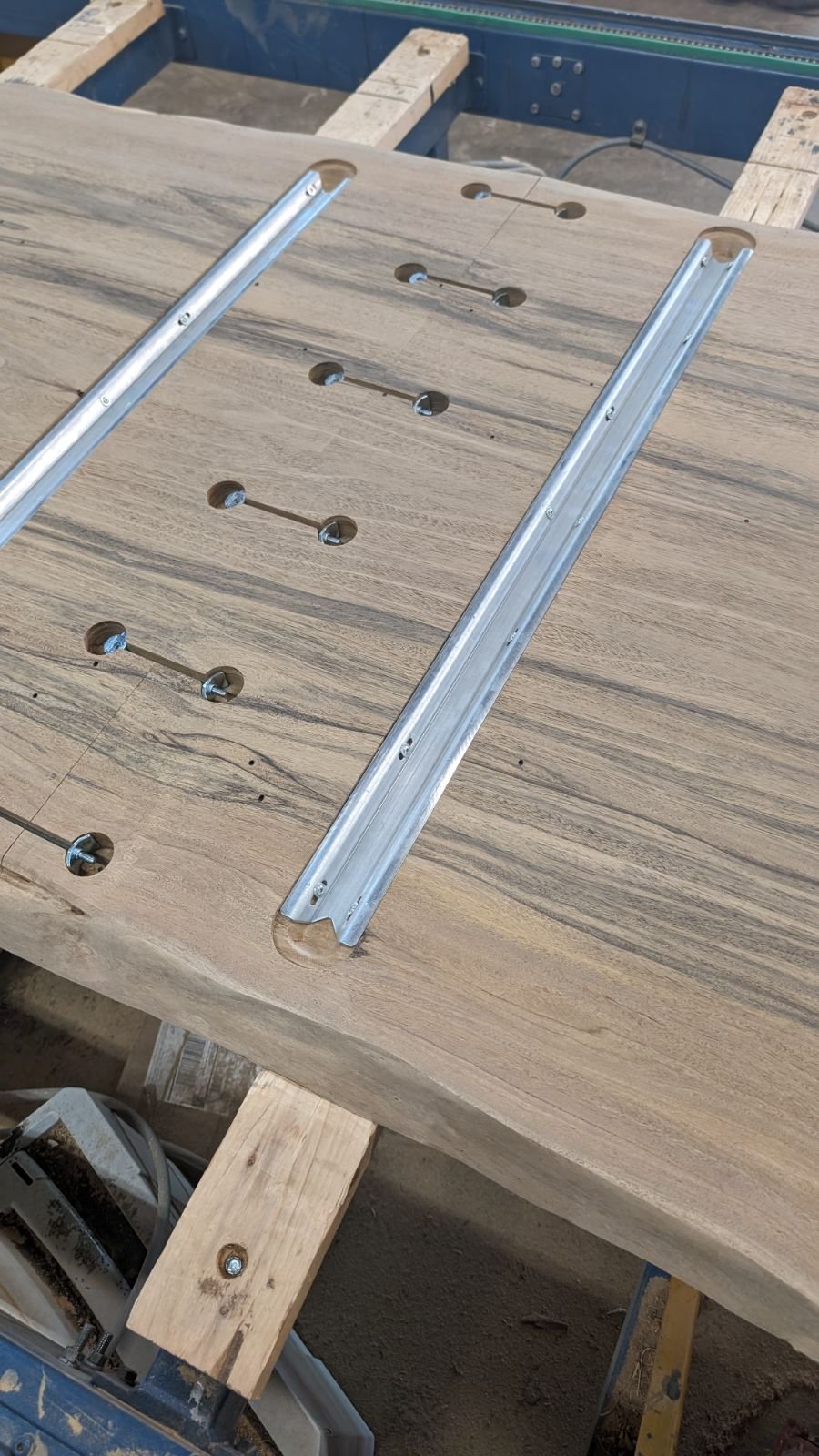Learn the terms to describe exactly what you want.
Table Types
Bucktown Built offers three types of tables for clients. Live Edge, Epoxy Tables, and Glass Tables. There are sub-categories that I will go through below.
Lets start with Live Edge Tables. Live Edge, Raw Edge, or Natural Edge all refer to leaving edge of the tree intact. The Live Edge is sanded and rounded over so everything is smooth to the touch.
Live Edge Tables can be a single slab which is one piece of wood or a Book Match which is two sequenced pieces of wood glued up together.
Below are some examples of Live Edge and Slab Tables.
Live Edge Table
The white edges of the table are called sapwood. The golden brown middle is called heart wood. Certain species have small amounts of sapwood and others have a larger amount. Please click here to visit a gallery of options.
Book Match
The picture above is two pieces of wood that will be glued together. The cuts of wood are sequenced, meaning they are right next to each other when the tree is harvested. We typically use this technique when making a very wide table and there are no single slabs wide enough.
Epoxy Tables
We also offer clients Epoxy tables which come in three styles. River, Cast, and Slab. Clients are provided options to choose from and can control design and cost by selecting certain species and amounts of epoxy.
River Tables
Rivers tables are created when the live edge of a table is inverted and then the negative space created by the Live Edge is filled with Epoxy. Bucktown Built utilizes certain species that have a specific edge detail which creates the illusion of a flowing river.
Cast
Cast Tables are framed in Epoxy filling the edge details with epoxy to the custom specified dimensions.
Slab Table
The table to the left has the Live Edge removed and is squared off. This helps our clients achieve a more modern aesthetic while at the same having a single grain pattern. Epoxy is used to compliment the design of the table.
Glass Tables
The third option we provide clients are glass tables. The glass can be used to fill voids while revealing the live edge details below the table. Glass can be hand cut and used to fill edges, fill voids in the middle of the table, or placed over the top of the table. We utilize safety glass that is tempered, the edges of the glass are sanded, and each corner is rounded over to reduce the sharpness.
Glass River Table
This is an example of a full glass River Table. There are many different options for glass tables and they require certain pieces of wood with specific legs to support the structure, so please Contact Us to learn more.
This is your table and you control every detail.
Lets collaborate and design something that reflects your style.
Color Options
Design Process
Customer Experience
About Us
Construction
Size Guide
Samples
In-Stock
Showroom

















